Vision Therapy is teaching or rehabilitating the brain to use the eyeballs properly to gather information, process that information, and form a response based on these learned skills. It’s a professionally managed and administered treatment program that works on providing the patient with the necessary visual coordination and perceptual skills for enhanced performance. This works through a series of programmed treatment procedures giving the patient awareness and feedback plus sensory integration as visual development is improved and accelerated.
How long does it take to complete Vision Therapy?
A typical treatment recommendation for Vision Related Learning Problems consists of a minimum of approximately 40 weekly, one-hour, In-Office Vision Therapy Sessions, which are amplified by homework activities intended for 15-20 minutes a day, five days per week.
A typical Amblyopia/Strabismus Vision Therapy Program, or Brain Injury Vision Therapy Program may take a year or longer of weekly In-Office Vision Therapy Sessions.
Academy of Vision Development is proud to offer the newest technology available for our TBI, Post-Concussion, Developmentally and Sensory Delayed Patients. Our new Optometric Multi-Sensory Training table has been successful in cutting the amount of time some patients need to spend doing Vision Therapy in HALF! Learn more about this great new option.
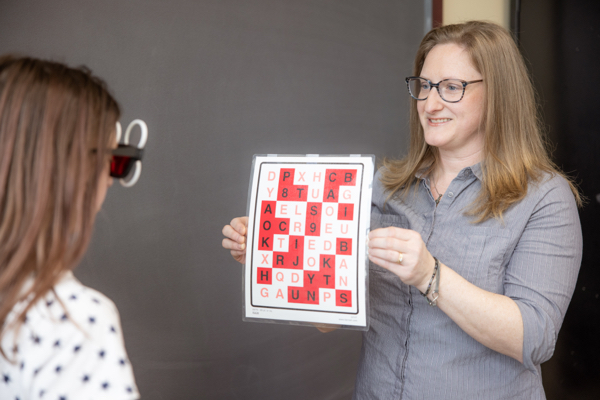
Optometric Multi-Sensory Training
Learn how this new technology Can Benefit Patients!
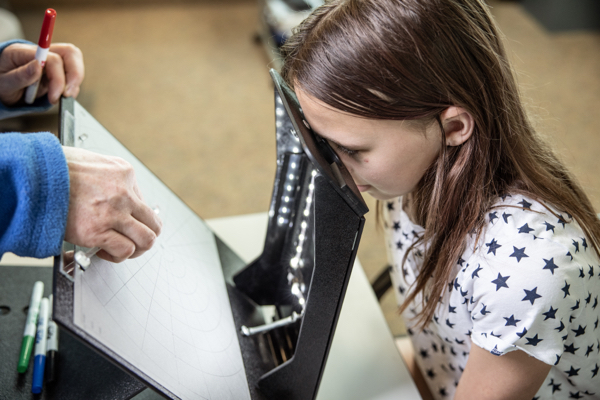
Make the most out of Vision Therapy
Is There an Age Limit for Vision Therapy?
In short, the answer is “No!” Vision Therapy is highly effective in helping adult patients overcome vision dysfunction, whether it’s been a struggle their whole life, or is the result of a concussion, traumatic brain injury, or neurological event. Adult patients are typically more motivated in therapy, especially once they start to experience results.
Anyone at any age CAN improve their visual efficiency.
Common Symptoms Vision Therapy Can Help in Adults
- Long-Standing Double Vision
- Poor Depth Perception
- Eye Turn (even after previous surgery)
- Headaches
- Difficulty Focusing on Screens
- Brain Injury
- Concussion
The Technology available at the Academy of Vision Development for use during Vision Therapy
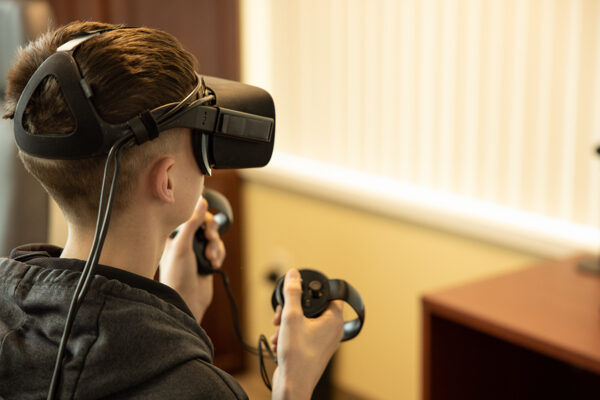
Virtual Reality
Virtual Reality with Vivid Vision allows us to encourage changes in vision through play within a controlled 3D environment. Many different games are available both in the office and as a home therapy option, monitored by our staff. Some patients who struggle with depth perception are able to see in 3D for the first time using this technology
Readalyzer
The Readalyzer goggles measure reading speed and comprehension and help us understand how vision is being used while reading. Sensors on the goggles record exact eye movements as they track across the page while reading a paragraph. This shows how efficiently the patient is moving their eyes from one line to the next while a series of yes or no questions about the text inform us how much information is retained while reading. One feature parents particularly find useful is a highlighted demonstration with a cursor moving over the paragraph showing exactly how their child’s eyes moved as they read the text.

Vision Builder
Vision Builder is a computer program patients can use at home after Vision Therapy has helped patients establish body awareness, spatial awareness and basic visual skills. It allows patients to further work on basic visual, eye teaming, visual memory, and reading related skills in a fun way. The programs can be customized to various levels of difficulty and use red/blue glasses to ensure both eyes are working together to do the tasks. Parents appreciate seeing scores and receiving immediate feedback of improvement.
Home Vivid with Oculus
Home Vivid Vision using a patient-purchased Oculus 2 Virtual Reality Console allows us to encourage changes in vision through play within a controlled 3D environment. Many different games are available both in the office and as a home therapy option, monitored and prescribed by our staff. Some patients who struggle with depth perception are able to see in 3D for the first time using this technology.
Sanet
The Sanet Vision Integrator (SVI) is a program we use on a large, height-adjustable touch screen computer. Patients enjoy working on eye movement, peripheral awareness, and visual memory with this hands-on technology. Combined with balance and rhythm and timing, it is a great motivational tool for improvement.
Blaze Pods
Blaze Pods are flashing disks that can be used on the floor, table, or wall. Immediate tactile feedback helps improve speed and quality of visual reactions, while sharpening attention and peripheral vision.
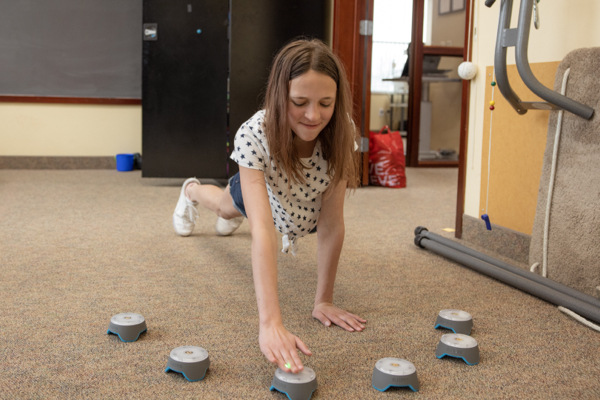
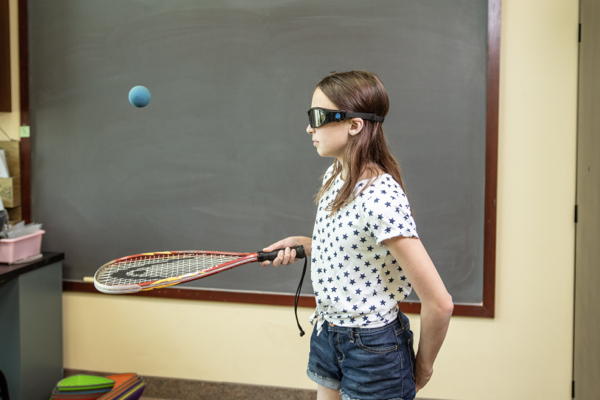
Senaptec
The Senaptec strobe training goggles help patients process vision information faster and more efficiently. The lenses can be programmed to flicker on and off in different patterns, causing heightened vision capability. Completing tasks in this challenging visual environment helps patients improve focus, timing, balance, eye-hand coordination, and peripheral vision.
Integrated Listening System
The Integrated Listening System (ILS) combines eye movements, music, balance, and bone conduction vibrations with midline crossing exercises to encourage visual and vestibular growth. Patients listen to different frequencies of music while wearing headphones with bone conducting vibrations. Specific programs can be prescribed to help with concentration, reading, emotion regulation, and sensory tolerance.


Optometric Multi-Sensory Training
- Optometric phototherapy (prescribed frequencies of light)
- Vestibular stimulation (motion table)
- Auditory stimulation (prescribed frequencies of sound through headphones)
- Gradually applied Optometric Vision Therapy
